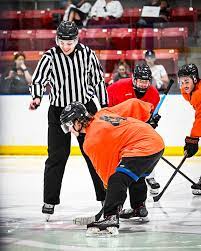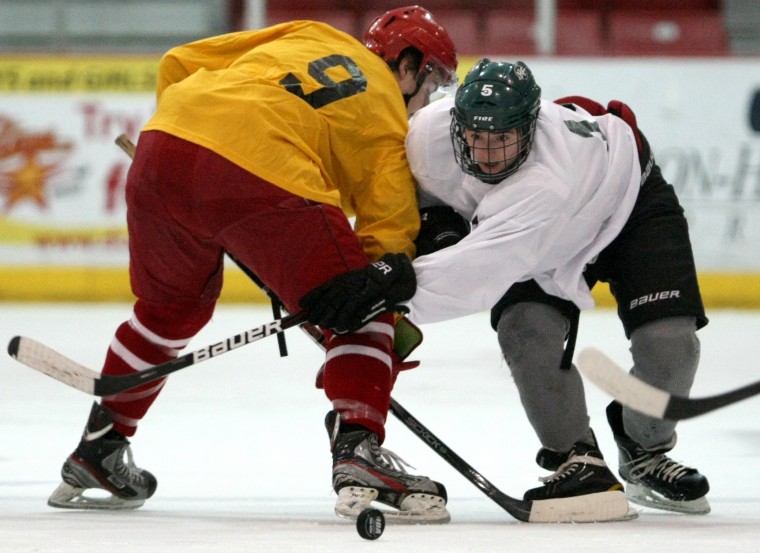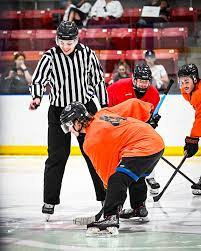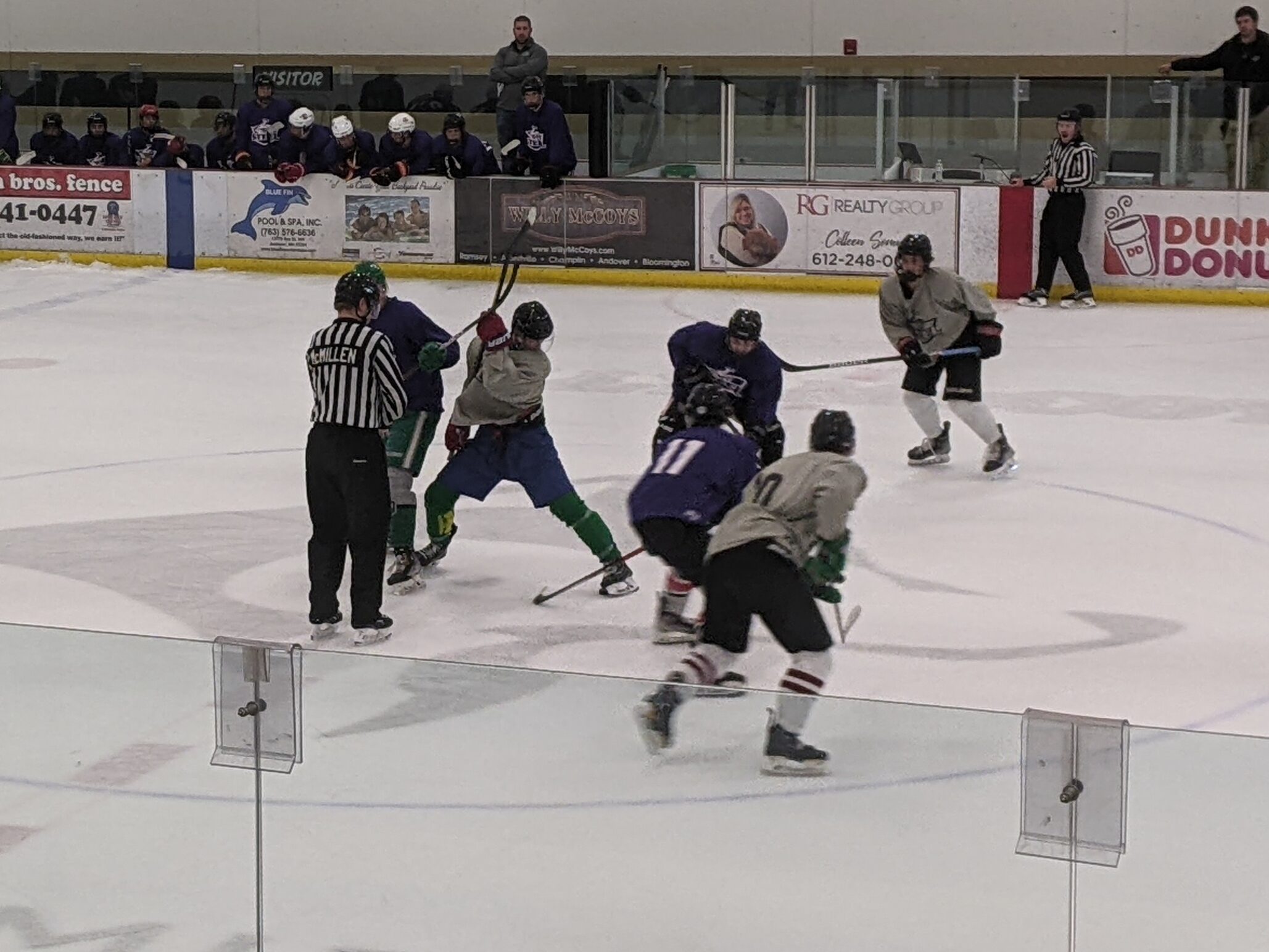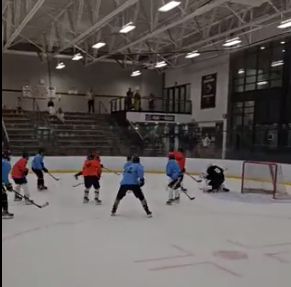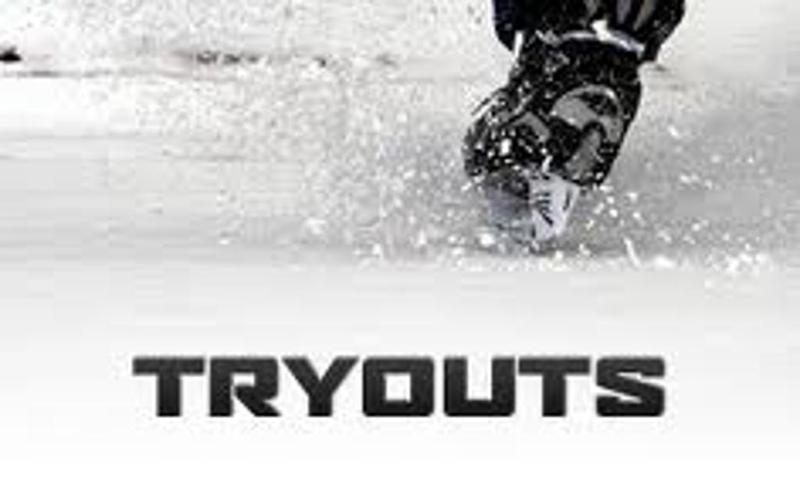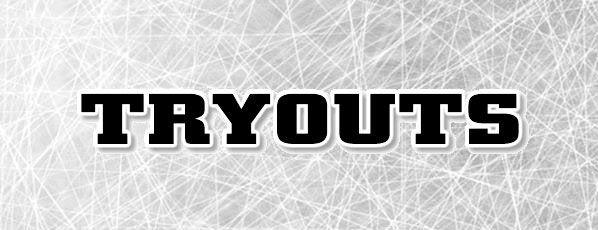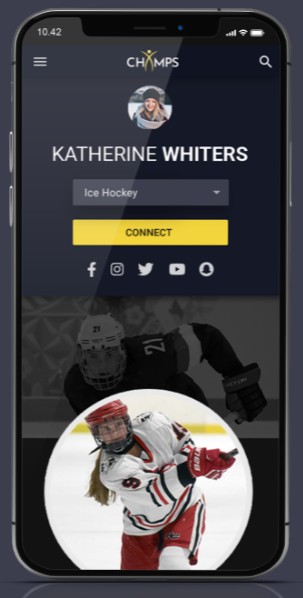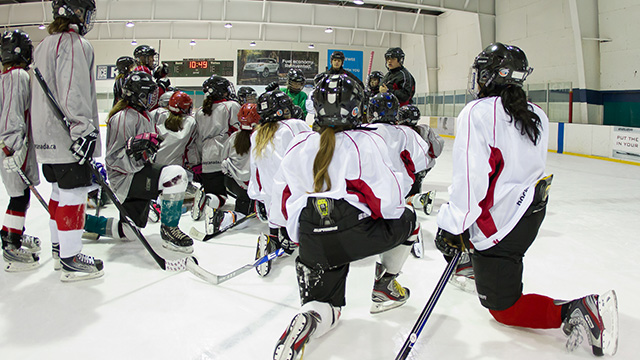
Tryout season has begun in both the United States and Canada. Having now gone through the process from 10U all the way up to 19U now, I have seen many of the different situations that occur at this time of year. The entire process was non-linear with lots of bumps along the way. Things didn’t always work out perfectly in the short term, but it all worked out in the long term. Based on our family’s experience, here are some tips for this year’s tryout season:
1. Player development is more important than winning games
Regardless of what age or level of youth hockey you play, it is 100% more important for your player to improve as much as possible rather than winning games. Now, losing sucks and winning championships can certainly help with exposure. But unless you are old enough to be recruited to the next level, given a choice between playing on a winning team, but not getting better or losing but taking major steps in your development – it should be a no-brainer which one to take.
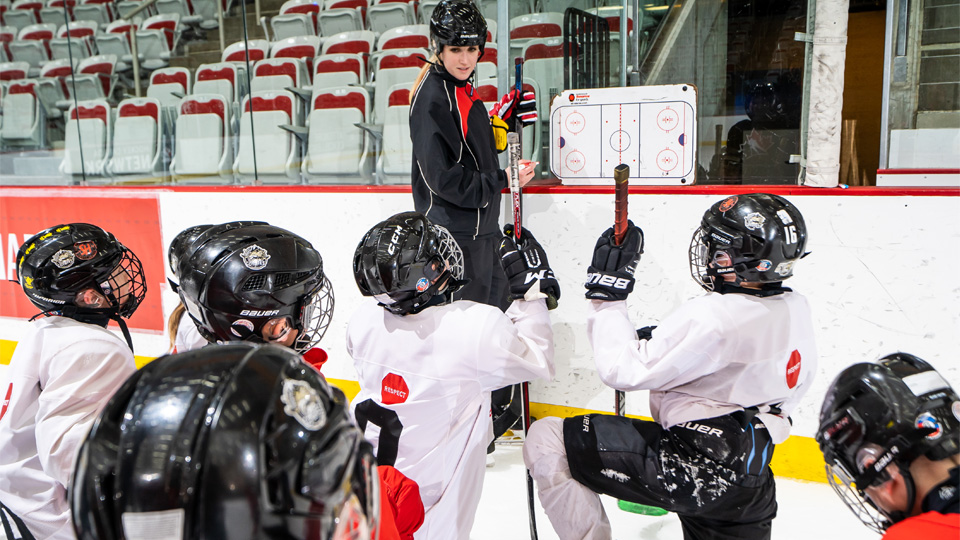
2. The best coach should be the highest priority in deciding where to play
There are many many factors in deciding where to try out and play, including distance from home, cost, practice and game schedule etc. But the most important should be to find the best coach that will develop your player the most.
3. Try not to be the best or worst player on the team
All things being equal, you want to be in the middle of the pack player on a team – not the top or the bottom. Although or one season it is okay to be at the top or the bottom. Being the best means you may not be challenged as much as you are capable of. And being the worst can cause lots of frustrations. If you are in the middle, that is a great opportunity to work your way up the lineup if you can. Of course all players want to be on the power play and penalty kill. A good coach will cycle through all the lines on a team.
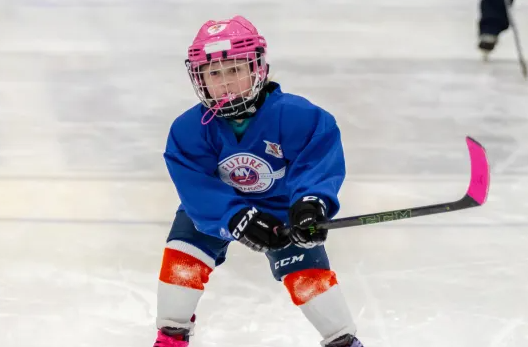
4. Politics is a fact of life
Like it or not, there is politics in tryouts. Just accept it for what it is and recognize that it may or may not work in your favor. Wasting energy on why a player was put ahead of yours is not going to be productive. The reality is that there is politics at every level of hockey especially at the district/provincial and national level. Just try to be the best player you can be and let the chips fall where they may. If you are that close to making or not making a team, then that is something that is within your control for next time by just getting better.
5. The most important training has already taken place
The last week of training before tryouts won’t likely be the difference between making a team and not. While there are small things that can help a player succeed at tryouts – the things that will most impact their level of play and success at tryouts will have taken place during the months leading up to tryouts. There shouldn’t be a need to spend 3 hours each night at the rink the week before tryouts.
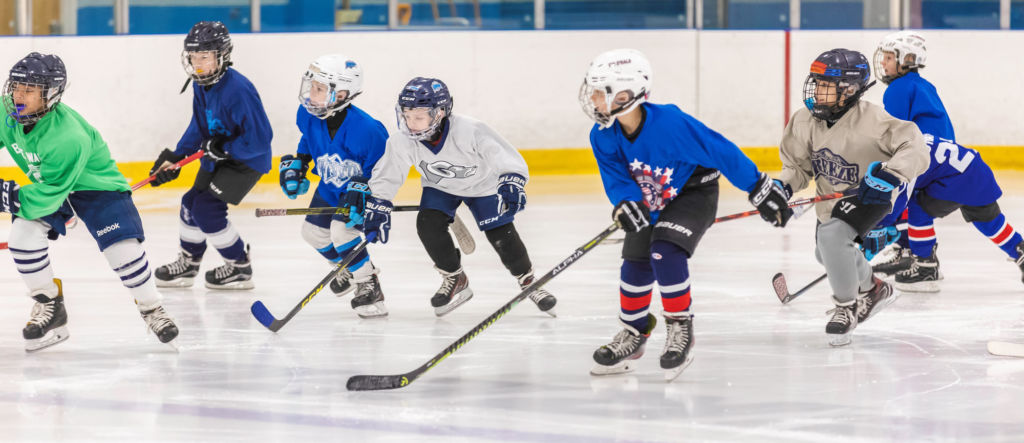
6. Coaches are also evaluating the parents
Many coaches are judging parents as much as the kids. Nothing wrong with getting to know the coaching staff and how they plan to run the team. Also, it is important to make sure that you share the same philosophies on how the coach plans to run the team. But be aware that the coach is also evaluating if you will be a “high maintenance” parent.
7. Tryouts may not actually be tryouts
As kids get older (i.e. U14 and above), it’s okay that the coach already decided on many if not all of the players who will make the team. Tryouts are just a point in time. Depending on the club, many coaches run “development camps” leading up to tryouts. This way they can review players over an extended period of time. In my opinion, there is nothing wrong with them using that evaluation period to already decide if they want a player on their team or not.
8. Many clubs make money on tryouts – don’t waste yours
Be wary of some clubs who use tryouts as a way to make money. There are many clubs who charge several hundred dollars for players to tryouts and will accepts 3-4 times as many players to try out as they have spots. While occasionally trying out for the “experience” or “getting more ice time” might make sense, you should know if your player has a real chance of making the team before you show up. Don’t waste your money on attending a tryout when that money would be better spent on a lesson or two with a skills coach.
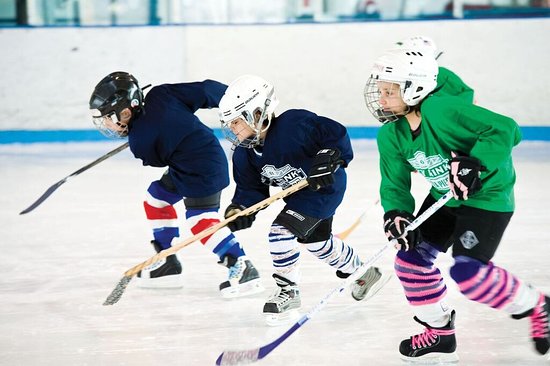
9. Coaches aren’t perfect
Don’t expect perfection from coaches. Your player isn’t perfect and neither are coaches. Each club has a different way of evaluating players – some as a group with “objective” observers and some with just the coaching staff for a team. No method is perfect, however some are more sophisticated than others. Know before you show up what to expect and realize just like players and referees, coaches don’t always get everything exactly right. If you don’t what to expect before you show up to a tryout and know the pros and cons of how a club conducts tryouts, then you share some of the blame too.
10. Feedback is a gift
Ask for feedback in a professional manner after tryouts if you didn’t make the team. If an organization really cares about youth hockey development they would be happy to provide additional insights as to why a specific player didn’t make the cut. Take the feedback as a gift even if you disagree with the feedback. Do not argue or make your case as to why you saw things differently. It doesn’t matter. What matters is that you at least know why and could potentially take action on the feedback. Get better for your next tryout and try out for a team where your player would not be so close to making or not making the team.
Bonus: Hockey makes players better people
Not making a team can be very emotional and challenging. But I guarantee, if you have a resilient player, it will all work out fine. Both my kids did not make teams in youth hockey, but they still ended up playing at the highest level of hockey for their age group when they got older. Take is as an good life lesson.
ICYMI: Watch this Episode on Girls Tryouts with Alyssa Gagliardi
Champs App Messaging
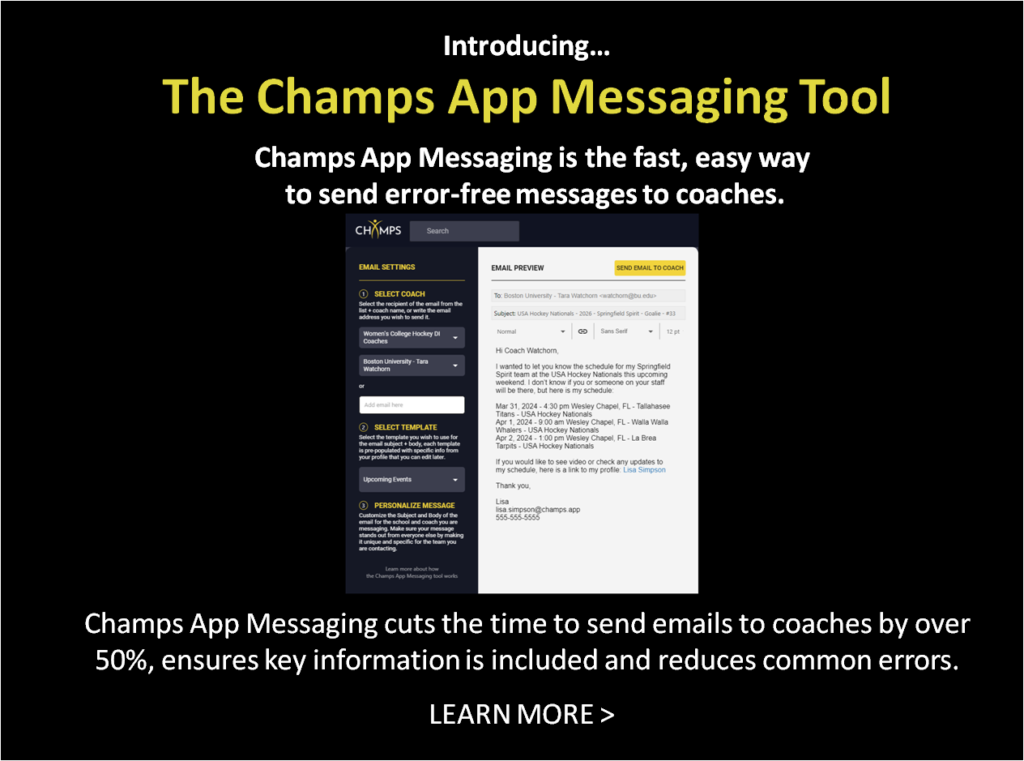
You can easily select a coach & email template and the message automatically populates the coach’s info, school and your personal information from your Champs App profile. Pick the Upcoming Events template and the Messaging tool with magically insert your upcoming games or events into the message.
Watch the demo (Desktop Version) (Mobile Version) and try it out today!


